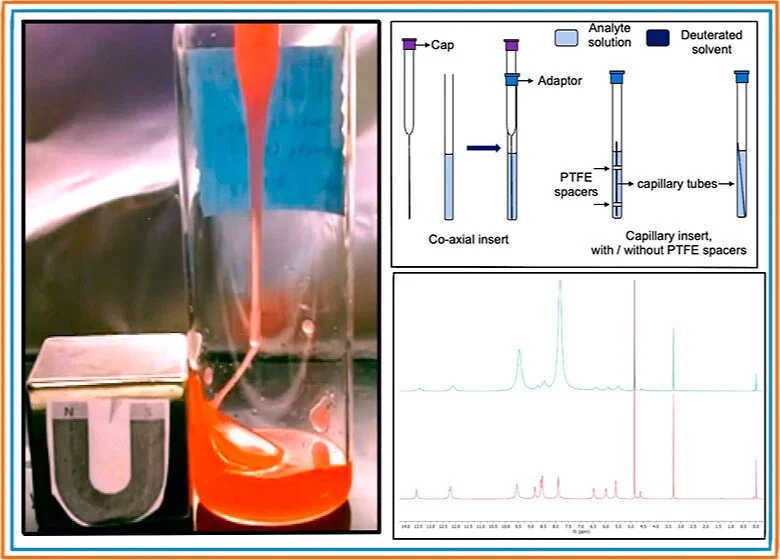Synthesis, Characterization, and Magnetic Properties of Lanthanide-Containing Paramagnetic Ionic Liquids: An Evan’s NMR Study
Abstract
The present study focuses on the synthesis and characterization of lanthanide-containing paramagnetic ionic liquids (ILs), [CnC1Im]3[MCl3X3] (n = 4, 6, and 8; M = Gd, Dy, and Ho; X = Br and Cl), derived from 1-alkyl-3-methylimidazolium anions. These paramagnetic ILs exhibit low vapor pressure, high thermal stability, physiochemical stability, and tunability, along with significant magnetic susceptibility, making them of interest in advanced material applications that may take advantage of neat liquids with magnetic susceptibility. Structural and physical properties were determined using FTIR, 1H NMR, DSC, and TGA. The room temperature density and viscosity of the iron paramagnetic ILs were also reported. Accompanying this report of paramagnetic IL products, we reintroduce and highlight Evan’s NMR technique, an accessible magnetic susceptibility measurement technique that can utilize any available proton NMR to characterize the magnetic susceptibility of ILs. This work demonstrates the robustness of Evan’s technique by demonstrating the ability to account for the IL water content, a common issue for hygroscopic materials, during the measurement of magnetic susceptibility. A detailed comparison of the ILs is presented, with dysprosium- and holmium-containing paramagnetic ILs exhibiting the highest magnetic susceptibility reported for mononuclear ILs reported to date. These materials have been studied with an eye on applications for mass transfer, eventually seeking to optimize magnetic susceptibility and viscosity using magnetic field gradients to move paramagnetic ILs carrying solute or heat. The study of paramagnetic ILs is important not only for understanding the magnetic properties of these materials but also for potential applications in areas such as magnetic resonance imaging, biomedicine, environmental remediation, and mass transfer. These unique materials have the potential to bring about new advances and technologies in the fields of materials science and analytical chemistry.



